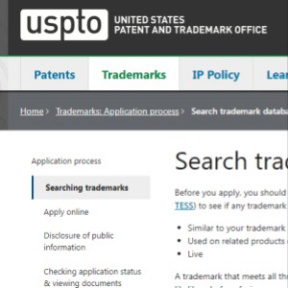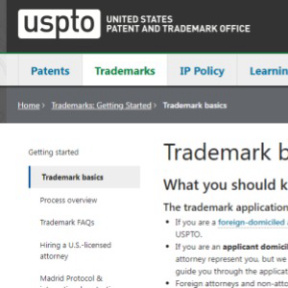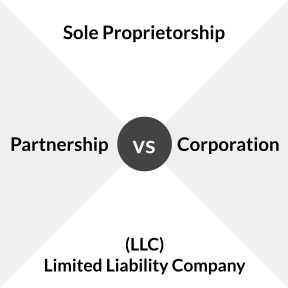
How to Start a Publishing Company — Checklist Download
This free checklist will help you set up your own publishing company.
Download Now
Publishing Company Business Plan — Free Template
This template will help you to build your business plan from gathering vital information to presenting it professionally.
Download NowHow to Start a Publishing Company:

A step-by-step guide on how to create a publishing company.
Decide on a type of publishing.
Choose what sort of publishing company you want to start.

The first step in starting a publishing company is in deciding what and how it will be publishing. Consider the options below.
Trade: Aims for wider public consumption. Companies that publish magazines, newspapers, popular music, popular video games, and books for the general reading public all fall into this category.
Academic and educational: Focuses on research and educational material. Academic research journals and syllabus-oriented textbooks fall into this category.
Independent and regional: Made up of small presses focusing predominantly on materials of local or regional interest, such as local histories and tourism pamphlets.
Boutique: Specializes in narrow, niche markets. Small presses publishing genre-specific fiction fall into this category, for example.
Self-publishing: The creator of the material pays the publishing costs and plays a much bigger role in the process.
Electronic: Offers an alternative to traditional publishing, sharing content across digital platforms only.
Name your business.
Come up with a name.

Give your company a name. There are a number of things to consider when naming your publishing company to successfully convey the values and mission of your brand, but you'll want to be creative. A unique name will set your company apart from the rest and will make it easier later when securing a domain name.
Think specifics: What genre are you working in? What subject, and for what age groups?
Revisit values: What are your business's core values? And what values does your market hold as important?
Your name should be easy to remember, spell, and say.
Check availability.

Use the U.S. Patent and Trademark Office’s trademark search tool to see if your name isn't already in use.
Trademark your business name.

If you have decided on a publishing company business name, secure a trademark so that no one else takes it. You can register a trademark at www.uspto.gov.
Go to the U.S. Patent and Trademark Office website.
Click on "Trademarks."
Click on "Trademark basics."
Make sure you fully understand what is required of you.
Click on "Apply for a trademark."
Register on the Trademark Electronic Application System (TEAS).
Pick a distribution model.
Consider the print-on-demand model.

Check to see if print-on-demand works for the publishing you're doing, your goals, and your budget. With this model, nothing is printed before-hand. Someone purchases your publication online, the order is sent to the printer, and then sent to the customer.
Without having to print ahead of time and store inventory in a warehouse, print-on-demand is less risky and requires a lower investment in each title. However, the cost of printing is higher per unit.
Consider the traditional distribution model.

Find out whether printing ahead of time and storing publications in a warehouse fits the kind of publishing you do, your budget, and your goals.
While this model does allow for bulk printing and ensures consistently good quality, it is expensive upfront because it carries storage, returns, and shipping fees.
Consider the direct-to-reader model.

Consider whether cutting out most of the distribution chain and selling digital publications directly to readers through an online sales page makes sense for your company.
There are very little upfront costs and risks with this model, but a comprehensive marketing strategy is needed.
Create a publishing company business plan.
Write the business description section.

Leave a page for the executive summary, which should be written last, and start with the business description section. This section includes legal structure, location, the expected launch dates of publications, and all sources of revenue.
Write the operations and management section.

After describing your business, move on to describe the leadership and management structures. This section includes the backgrounds of all members of your leadership team and demonstrates why they are a good fit. Include information about the major departments such as editorial, sales, legal, operations, etc.
Run through your marketing strategy.

Once you've finished discussing your leadership, break down your business's marketing strategy. Include information about your target market, genre, and promotional outlets.
Do a full SWOT analysis and include the information about your strengths, weaknesses, opportunities, and threats in this section.
Write about your competition.

Unpack in detail industry revenues for the last few years, paying attention to growth. Then describe what you know about other publishing houses in your area. In particular, note what aspects of their business may be in direct competition with yours.
Talk about your financials.

Discuss your start-up expenses, sources of funding, financial operations, revenue projections, and break-even point.
The better you know your competition and target market, the more accurately you will predict your first-year revenue.
Share your future plans.

Describe any plans you have for your company. Once it has covered all opening costs and is able to maintain strong cash flow, what is next? You can include hiring more people, publishing a few other titles, expanding the office building, creating an app, etc.
You don't need to be as detailed as in the rest of the business plan. A few details will be fine.
Now write your executive summary.

Now that you've written your business plan, it should be easier to distill everything into a snappy, thoughtful, evocative executive summary.
Include your mission statement.
List anything about your company that helps to distinguish it from the rest.
Focus on investment opportunities.
Form a legal entity.
Choose one of four legal structures for your company.

For professional, financial, and tax purposes, set up your company as a sole proprietorship, partnership, limited liability corporation (LLC), or corporation.
Independent publishing companies generally go with setting up a limited liability corporation to avoid personal liability and double taxation. It is also more flexible in terms of ownership and profit distribution.
Sole Proprietorship: A business that is owned and operated by just one person, who is then solely responsible for tax and liability issues.
Partnership: Two or more partners who share the business's tax and responsibilities.
Limited Liability Corporation (LLC): An entity that protects owners from liability, while passing taxes on to them. May use corporate or partnership tax rules.
Corporation: A distinct legal entity that assumes all liability and is taxed as a business at corporate tax rates. Has members and shareholders.
Secure start-up financing.
Approach a bank or government program.

Meet with your local bank to find out more about small business loans, or find a qualified lender that offers SBA loans.
Choose an option with interest rates that aren't too high.
Pitch to investors.

Sell equity in your business to interested investors. Investors give you money in exchange for part ownership.
Apply for a business credit card.

Approach a bank and apply for business credit. Interest rates for credit cards are high but are an option for a short term injection of capital.
Try crowdfunding.

Create a crowdfunding campaign to reach as many people as possible and offer them something for their financial help.
Purchase insurance.
Find coverage against libel and copyright lawsuits.

Buy several types of insurance including Media Liability Insurance, Publisher's Perils Insurance, and Business Interruption Insurance.
Search for an insurance company that offers packages designed particularly for publishers.
Find an office.
Lease commercial real estate.

If your home office won't suffice, start looking for an office space to rent. You'll need to take a serious look at your budget before approaching an agent.
Buy International Standard Book Numbers.
Buy an ISBN number from an ISBN service.

Help buyers and sellers identify your business as the publisher of a given book by buying a unique ISBN for each title. You can buy an ISBN from any number of ISBN services. A single ISBN costs between $18.00 and $150.00. Buying them in bulk often brings the price per number down.
They can be used for e-books, but aren't necessary.
Hire employees or freelancers.
Recruit the talent you need.

If you have started your company to self-publish, you'll play most of the roles found in the average publishing company. For a larger operation, you'll need help to produce, market, and distribute your published materials. You can decide to employ fulltime or make use of freelancers to fulfill different functions. Such functions include editing, sales, design, public relations, and bookkeeping.
Use hiring software to streamline the process of posting jobs, accepting applications, scheduling job interviews, and sending out final job offers. Or you can connect to freelancers through gig-economy platforms such as Upwork.
Approach a staffing agency. They often have access to large talent pools and can, therefore, reach more candidates.
Advertise your publishing company.
Create a company website.

Register a domain name and build a site that explains who you are and what you offer. Use a website builder to design a website or pay an expert to help you. Having a website increases your visibility, discoverability, and legitimacy.
Start social media accounts for your business.

Facebook and X pages, in particular, will make it easier for people to engage with you. Be sure to keep these pages active and don't underestimate the value of engaging directly.
Publish a blog.

Keep your website active and full of fresh, topical, and interesting information by publishing a blog. They're a great way to showcase your authors, books, magazines, newspapers, and games, and give you a strong platform for conveying your values, approaches, and mission.
Join your local publisher's association.

Become a member of your local publisher's association. This will give you access to exclusive events, professional development, networking opportunities, and the latest industry intelligence. It will also increase your company's visibility and credibility as a serious business.
Publishing Company Metrics:
Contribution Margin Per Book Sold.
The contribution margin in book publishing is the earnings from each title after all the variable costs accrued in the production and distribution of the book have been covered.
It is important to calculate the contribution margin from each book because it tells you how much each sale contributes towards paying your fixed costs and establishes a benchmark for how many books you need to sell before turning a profit.
Here are the three steps for calculating the contribution margin for each book:
Book list price x number of books sold = total sales.
Total sales - variable costs = total contribution margin.
Total contribution margin/number of books sold = contribution margin per book.
Example:
A book sells for $16 and a total of 10,000 are sold. This adds up to the total sales of $160,000.
Take the $160,000 total sales and subtract the associated variable costs, which for this example come to $100,000. This gives you a total contribution margin of $60,000.
Now, divide the $60,000 total contribution margin by the 10,000 books sold, and you have your contribution margin per book: $6.
Each book you've sold has contributed $6 towards paying your fixed costs. If all your fixed costs have been paid, then each book is contributing $6 towards your profit.
Key Terms:
List price: The price on the cover of the book in the bookstore or online store.
Variable costs: Retailer discount, distribution, paper, printing, binding, cover design, cover art, line editing, copy editing, text design, layout, proofreading costs, marketing, and royalties.
Fixed costs: Rent, salaries, insurance, licenses, permits, property tax, utilities, etc.
Expert Advice on Starting a Publishing Company:
Source | Advice |
|---|---|
Markus Dohle, Global CEO, Penguin Random House | “Let me mention three main trends in publishing. First, a significant sales shift toward online/e-commerce. Second, the growth of digital audio books. And third, the strength of print.” |
Fiona McCrae, Graywolf Press | “Publishing is full of generalizations, but a lot of the larger houses really wouldn’t buy a book if they didn’t think they’d sell at least 15,000 copies of it. So there were are all of these interesting, challenging manuscripts that small presses could and still do pick up over here in the U.S. At a small press you could sometimes sell 5,000 copies of a given literary book, which can be enough to get you in the black if you’re paying a modest advance. And you believe in the work and hope it might break out in some way—winning a prize, for example; finding a wider audience.” |
Declan Spring, Editor, New Directions Publishing Company | "So you’re not looking for the next bestseller. Any book worth it’s salt is going to be read and appreciated 20 years after it’s first published. We take a long term view of publishing." |
Future Tense Books | "What we learned is that the worlds of Kindle-toting eBook readers and our beloved small press readership were still pretty different from each other. Although there’s some definite crossover, we know for certain now that our friends, fans, readers, and yes, even critics, prefer their books (large or small) in their hot little hands." |
Sir Stanley Unwin, Founder, George Allen & Unwin | "The first duty of any publisher to their authors is to remain solvent." |
Must-Reads Before Starting a Publishing Company:
- Book Business: Publishing Past, Present, and Future by Jason Epstein.
- The Self-publishing Manual by Dan Poynter.
- Publishing for Profit by Thomas Woll.
- The Book Publishing Industry by Albert Greco.
- The Elements of Style by William Strunk Jr. and E.B. White.
- The Chicago Manual of Style by The University of Chicago Press Editorial Staff.
How to Start a Social Media Marketing Agency




